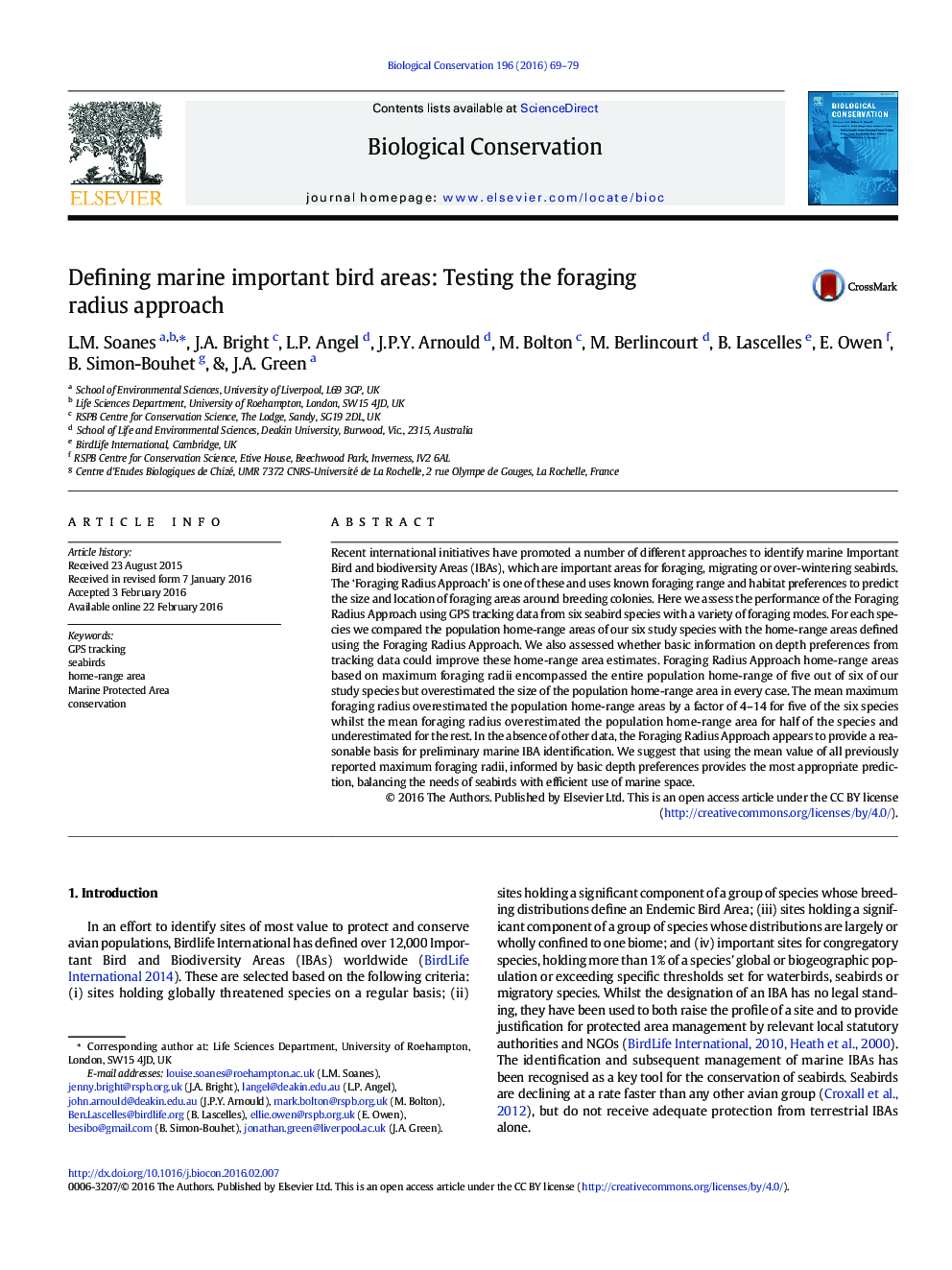| کد مقاله | کد نشریه | سال انتشار | مقاله انگلیسی | نسخه تمام متن |
|---|---|---|---|---|
| 6298479 | 1617905 | 2016 | 11 صفحه PDF | دانلود رایگان |
عنوان انگلیسی مقاله ISI
Defining marine important bird areas: Testing the foraging radius approach
ترجمه فارسی عنوان
تعریف مناطق پرنده مهم دریایی: تست روش شعاع تغذیه
دانلود مقاله + سفارش ترجمه
دانلود مقاله ISI انگلیسی
رایگان برای ایرانیان
کلمات کلیدی
موضوعات مرتبط
علوم زیستی و بیوفناوری
علوم کشاورزی و بیولوژیک
بوم شناسی، تکامل، رفتار و سامانه شناسی
چکیده انگلیسی
Recent international initiatives have promoted a number of different approaches to identify marine Important Bird and biodiversity Areas (IBAs), which are important areas for foraging, migrating or over-wintering seabirds. The 'Foraging Radius Approach' is one of these and uses known foraging range and habitat preferences to predict the size and location of foraging areas around breeding colonies. Here we assess the performance of the Foraging Radius Approach using GPS tracking data from six seabird species with a variety of foraging modes. For each species we compared the population home-range areas of our six study species with the home-range areas defined using the Foraging Radius Approach. We also assessed whether basic information on depth preferences from tracking data could improve these home-range area estimates. Foraging Radius Approach home-range areas based on maximum foraging radii encompassed the entire population home-range of five out of six of our study species but overestimated the size of the population home-range area in every case. The mean maximum foraging radius overestimated the population home-range areas by a factor of 4-14 for five of the six species whilst the mean foraging radius overestimated the population home-range area for half of the species and underestimated for the rest. In the absence of other data, the Foraging Radius Approach appears to provide a reasonable basis for preliminary marine IBA identification. We suggest that using the mean value of all previously reported maximum foraging radii, informed by basic depth preferences provides the most appropriate prediction, balancing the needs of seabirds with efficient use of marine space.
ناشر
Database: Elsevier - ScienceDirect (ساینس دایرکت)
Journal: Biological Conservation - Volume 196, April 2016, Pages 69-79
Journal: Biological Conservation - Volume 196, April 2016, Pages 69-79
نویسندگان
L.M. Soanes, J.A. Bright, L.P. Angel, J.P.Y. Arnould, M. Bolton, M. Berlincourt, B. Lascelles, E. Owen, B. Simon-Bouhet, J.A. Green,
